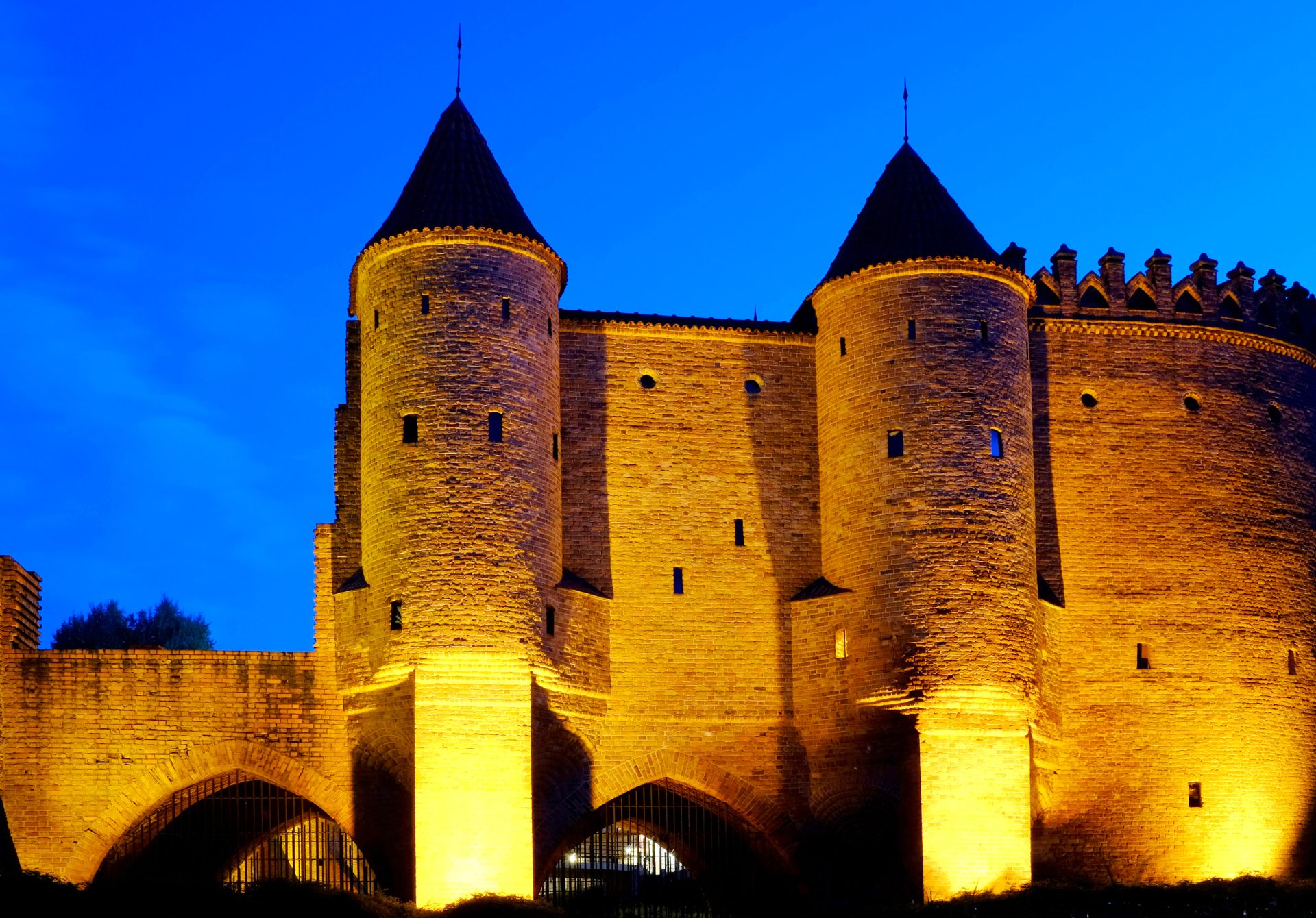Nestled in the heart of Warsaw’s Old Town, the Barbican stands as a testament to the rich history and architectural prowess of Poland’s capital. This semi-circular fortified outpost, with its distinctive red brick facade and imposing presence, has become an iconic symbol of Warsaw’s resilience and cultural heritage.
Historical Background
The Warsaw Barbican, known locally as “Barbakan Warszawski,” was constructed between 1540 and 1544 under the reign of King Sigismund I the Old. It was designed by Italian architect Giovanni Battista the Venetian, who was commissioned to strengthen Warsaw’s defenses against potential invasions.
Originally, the Barbican was an integral part of Warsaw’s double defensive walls, serving as a crucial fortification at the junction between the Old and New Town. Its primary purpose was to protect the Nowomiejska Gate, one of the main entrances to the city.
Architectural Features
The Barbican’s architecture is a prime example of Gothic-style military engineering, blended with Renaissance influences. Some key features include:
- A circular structure with a diameter of 14.5 meters
- Walls reaching up to 4.5 meters thick in some sections
- Seven levels of arrow slits for defensive purposes
- A distinctive red brick exterior
- A bridge connecting it to the Old Town walls
The structure’s design allowed defenders to fire at attackers from multiple angles, making it a formidable obstacle for any invading force.
Historical Significance
Throughout its history, the Barbican has played a pivotal role in Warsaw’s defense and has witnessed numerous significant events:
1656 Swedish Invasion
During the Swedish Deluge, the Barbican proved its worth as a defensive structure, helping to repel Swedish forces attempting to capture Warsaw.
18th and 19th Centuries
As Warsaw expanded and military technology advanced, the Barbican’s defensive importance diminished. It was partially demolished in the 19th century, with only the outer wall remaining.
World War II
The Barbican suffered extensive damage during the Warsaw Uprising of 1944 and the subsequent destruction of Warsaw by Nazi forces. Approximately 95% of the structure was reduced to rubble.
Restoration and Modern Significance
In the aftermath of World War II, Warsaw embarked on an ambitious reconstruction project. The Barbican, given its historical and cultural importance, was one of the priority structures to be rebuilt.
Reconstruction Process
The reconstruction of the Barbican began in 1952 and was completed in 1954. It was meticulously rebuilt using original 16th-century bricks salvaged from the rubble, supplemented by bricks from demolition sites in Nysa and Wrocław. The restoration aimed to recreate the Barbican’s original appearance as accurately as possible, relying on historical documents, paintings, and architectural plans.
Current Role in Warsaw’s Cultural Landscape
Today, the Barbican serves as a popular tourist attraction and a symbol of Warsaw’s resilience. It hosts various cultural events, including:
- Historical reenactments
- Art exhibitions
- Concerts and performances
- Educational tours for school groups
The structure also houses a small museum that showcases its history and the broader context of Warsaw’s fortifications.
The Barbican in Modern Warsaw
The Barbican’s significance extends beyond its historical value. It has become an integral part of Warsaw’s urban fabric and plays a crucial role in the city’s tourism industry.
Tourism Impact
According to recent statistics, the Barbican attracts over 200,000 visitors annually, contributing significantly to Warsaw’s tourism economy. It’s often included in walking tours of the Old Town and features prominently in city guidebooks and promotional materials.
Cultural Events
The Barbican hosts numerous events throughout the year, including the popular “Nights at the Barbican” summer festival, which features open-air concerts, theatrical performances, and historical reenactments. These events not only entertain visitors but also educate them about Warsaw’s rich history.
Conservation Efforts
Preserving the Barbican for future generations is a priority for Warsaw’s city authorities. Recent conservation efforts have focused on:
- Cleaning and restoring the brick facade
- Reinforcing the structure to withstand environmental factors
- Implementing modern lighting systems to enhance nighttime visibility
- Improving accessibility for visitors with mobility challenges
These efforts ensure that the Barbican remains a well-preserved historical landmark for years to come.
The Barbican of Warsaw stands as a powerful symbol of the city’s tumultuous history and its remarkable ability to rise from the ashes. From its origins as a defensive fortification to its current role as a cultural landmark, the Barbican has continually adapted to serve the needs of Warsaw and its people. Its reconstruction after World War II not only restored a piece of architectural heritage but also became a testament to the Polish spirit of resilience and determination.
As visitors walk through its ancient archways or attend cultural events within its walls, they are not just experiencing a historical monument; they are participating in the ongoing story of Warsaw – a city that has faced numerous challenges yet continues to thrive and evolve. The Barbican serves as a bridge between Warsaw’s past and present, reminding us of the importance of preserving our cultural heritage while embracing the future.
In an era of rapid urban development, the Barbican stands as a poignant reminder of the value of historical preservation and the power of architecture to connect us with our collective past. It is not merely a tourist attraction but a living piece of history that continues to inspire and educate, ensuring that the rich tapestry of Warsaw’s history remains vibrant and relevant for generations to come.

